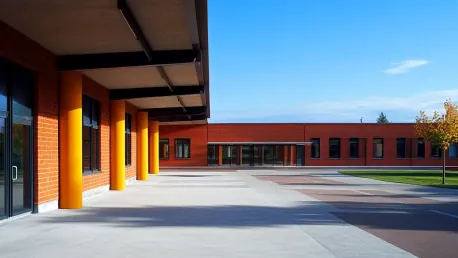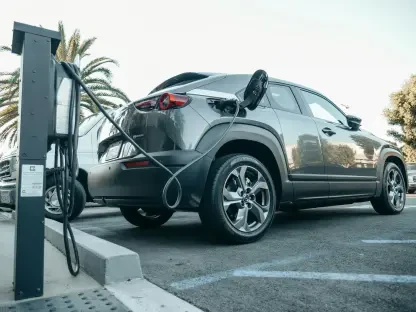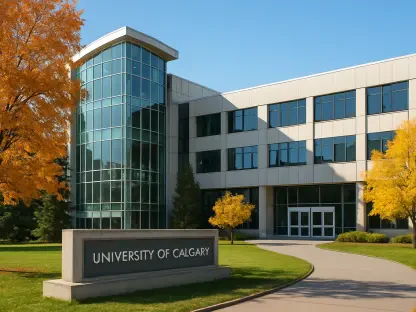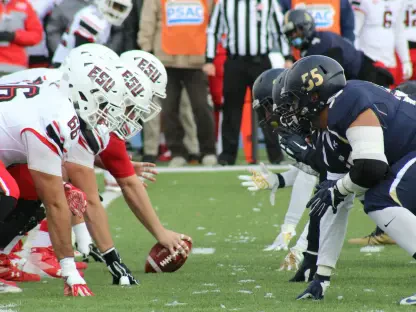Michigan schools are facing a staggering $22.8 billion gap in their infrastructure funding needs, a figure revealed by a comprehensive study. This financial shortfall underscores the crucial requirement for addressing basic infrastructure issues such as heating, roofing, and safety measures. Education leaders are raising alarms as they emphasize the necessity of these fundamental improvements to ensure both student safety and optimal learning environments.
Current State of School Infrastructure in Michigan
Comprehensive Evaluation Unveiled
The School Finance Research Foundation conducted this extensive study, illustrating the seriousness of the $22.8 billion funding shortfall linked to building health, safety, and wellness standards across Michigan schools. Spanning two years, the report involved an impressive 95,000 hours of assessments carried out by 1,500 professionals who examined every inch of the 243 million square feet of school building space statewide.
Through their evaluation, officials reviewed 89 specific infrastructure components, including HVAC systems, roofing, electrical systems, and fire alarms. The findings revealed pervasive infrastructure inadequacies, underlining the urgent need for immediate action. This exhaustive evaluation offers a crucial perspective on the current situation across the state, setting a clear mandate for addressing these shortcomings to create safer and more conducive environments for learning.
Implications for Local and State Action
The critical data unveiled in this report equips local districts, school boards, and communities with the information necessary to make informed decisions regarding school building investments. Nevertheless, this stark revelation comes with the acknowledgment that local-level funding might fall short of addressing the widespread issues, owing to the magnitude of necessary improvements. Many local districts may find themselves financially incapable of meeting these requirements without external support.
The study further noted the absence of dedicated state funding for school infrastructure, pointing out that schools typically rely on their general fund operations for these purposes, which is far from ideal. This funding gap signals a pressing need for state-level intervention to ensure equitable facility quality across all districts, irrespective of geographical location. Education leaders emphasized the critical importance of state-supported initiatives to level the playing field and comprehensively address these substantial infrastructure needs.
Common and Region-Specific Challenges
Statewide Infrastructure Shortcomings
The study identified several common infrastructure challenges across Michigan, emphasizing the need for a unified and strategic approach to address these issues. Areas such as outdated HVAC systems, deteriorating roofing, and faulty electrical systems were prevalent across many school districts. These deficiencies pose significant risks to student safety and hinder the creation of effective learning environments.
Moreover, fire alarm systems and other essential safety measures were found wanting in many schools, highlighting potential hazards that could have serious implications. Such systemic issues require comprehensive and coordinated efforts to tackle, ensuring that schools can provide a safe and nurturing environment for students. This widespread need calls for prioritized investments and innovative solutions that can bridge the funding gap effectively and efficiently.
Addressing Specific Regional Needs
In addition to common infrastructure deficiencies, the study also revealed region-specific challenges that require tailored approaches. For instance, schools in rural areas may face different infrastructural issues compared to those in urban centers, necessitating customized strategies to address their unique needs. Each region’s distinct challenges require careful consideration and strategic planning to ensure that all schools, regardless of location, can provide high-quality learning environments.
Understanding these regional disparities is crucial for developing targeted interventions that can effectively address the diverse needs of Michigan’s school infrastructure. By recognizing these regional differences, policymakers and educational leaders can implement solutions that are both equitable and efficient, ensuring that all students have access to safe and conducive learning spaces. This approach underscores the importance of a comprehensive understanding of the state’s educational landscape, enabling informed decision-making and strategic investments.
Moving Forward: Actions and Solutions
Leveraging Data for Decision Making
Reviewing the findings of this comprehensive study can provide valuable insights into the current infrastructure status of local districts and inform the necessary steps for improvement. Education leaders are calling for immediate actions to ensure that all Michigan students benefit from safe and conducive learning environments. By leveraging the critical data provided, local and state officials can prioritize investments to address the most urgent infrastructure needs and develop long-term strategies for sustainable improvements.
Utilizing this information effectively will require collaboration among local districts, school boards, communities, and state leaders. Together, they can identify priorities, allocate resources, and implement solutions that address both common and region-specific challenges. This coordinated effort is essential for ensuring that every student in Michigan has access to an educational environment that supports their safety and well-being.
State Level Support and Initiatives
Given the extensive nature of the infrastructure needs, state-level support is imperative for achieving equitable facility quality across all districts. Policymakers must explore new funding avenues, perhaps through state-funded initiatives or public-private partnerships, to bridge the financial gap and ensure that all schools can meet the necessary health, safety, and wellness standards. State intervention can help level the playing field, providing an equitable distribution of resources that benefits all students, regardless of their geographical location.
Through such state-supported initiatives, Michigan can make significant strides in addressing the $22.8 billion infrastructure gap. By prioritizing investments, engaging in strategic planning, and fostering collaboration among all stakeholders, the state can turn the tide and create a safer and more conducive learning environment for every student. This proactive approach will lay the foundation for a brighter and more equitable future for Michigan’s schools.
Looking Ahead: Ensuring Equitable Educational Environments
Michigan’s schools are confronted with a daunting $22.8 billion deficit in their infrastructure funding needs, as unveiled by an extensive study. This significant financial shortfall highlights the urgent need to address essential infrastructure issues, including heating, roofing, and safety measures. Educational leaders are sounding the alarm, stressing the importance of these vital improvements to both ensure student safety and create optimal learning environments. They argue that without these basic infrastructure updates, the quality of education and the well-being of students are at serious risk. The funding gap not only impacts the school’s physical conditions but also affects the morale of both students and staff, potentially hindering academic performance and overall school functioning. It’s a pressing concern that demands immediate attention from policymakers and the community to secure a conducive and secure environment for learning. Addressing this financial challenge is critical to safeguarding the future education quality in Michigan.









